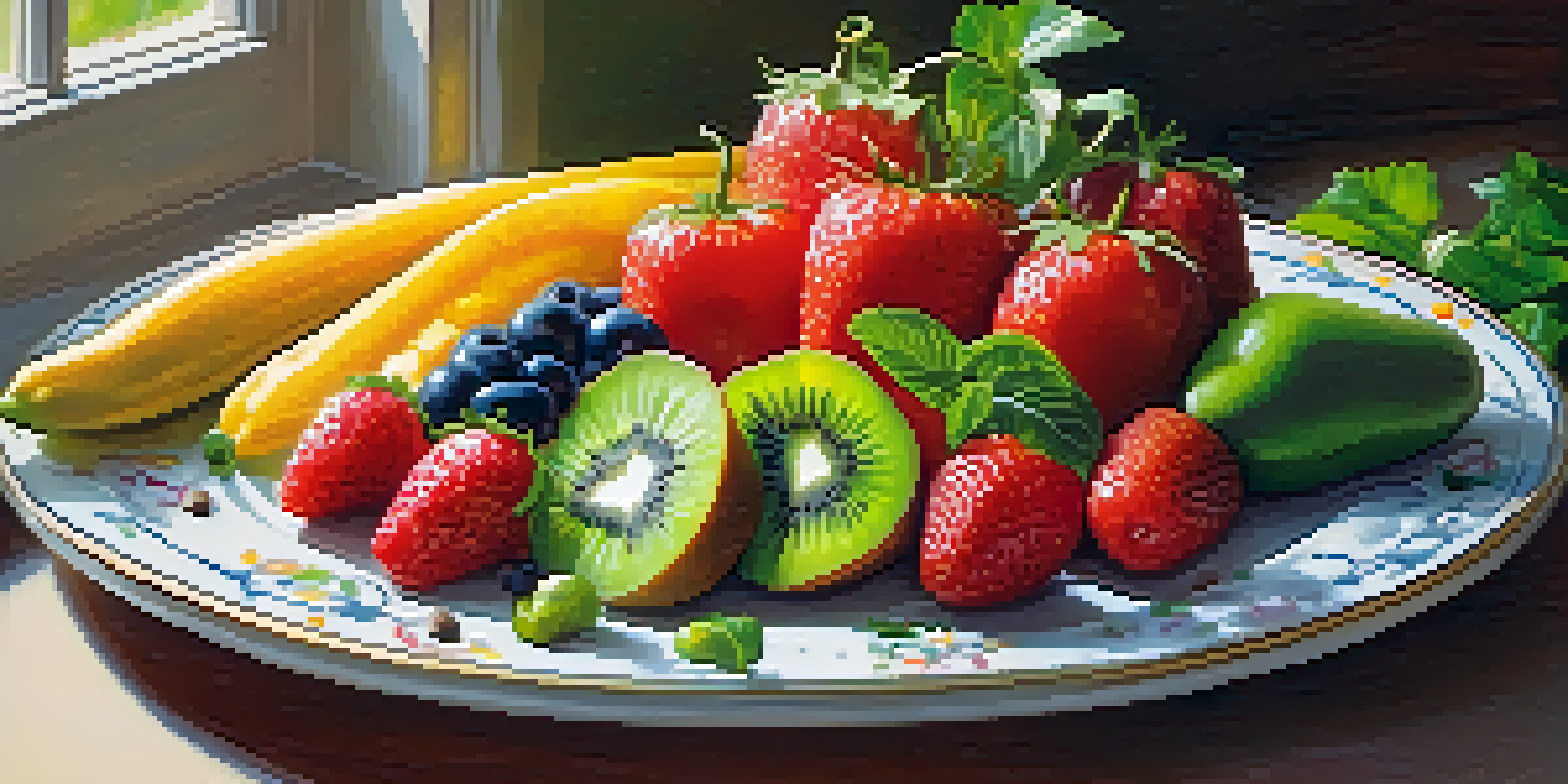Raw Food Diets: A Path to Mindfulness and Presence

Understanding the Raw Food Diet: A Simple Overview
The raw food diet is all about eating foods that haven't been cooked or processed. This means embracing fruits, vegetables, nuts, seeds, and sprouted grains. The idea is that cooking can destroy essential nutrients and enzymes that our bodies need for optimal health.
Let food be thy medicine and medicine be thy food.
Many proponents of this diet believe that consuming raw foods can lead to better digestion, increased energy levels, and even clearer skin. But beyond the physical benefits, there's a deeper aspect to consider—mindfulness. Preparing and eating raw foods can become a meditative practice.
As you chop vegetables or blend smoothies, you engage fully in the present moment. This connection between food and mindfulness sets the stage for a more intentional way of living.
Mindfulness: The Heart of a Raw Food Lifestyle
Mindfulness is all about being present and aware, and it can transform the way we approach food. When you adopt a raw food diet, it’s not just about what you eat; it’s about how you eat. Taking the time to appreciate each bite becomes a practice of gratitude and awareness.

By focusing on the textures, colors, and flavors of raw foods, you cultivate a deeper connection to your meals. This can shift your relationship with food from mindless snacking to intentional nourishment.
Raw Foods Encourage Mindfulness
The raw food diet promotes mindfulness by encouraging individuals to appreciate the textures and flavors of their meals.
In essence, eating raw is an invitation to slow down and savor each moment, fostering a sense of presence that extends beyond the dining table.
The Role of Preparation in Raw Food Diets
Preparation is key in a raw food diet. Unlike traditional cooking, you may find yourself experimenting with techniques like soaking, sprouting, or dehydrating. This not only enhances the flavors but also allows you to connect with the ingredients on a deeper level.
The food you eat can be either the safest and most powerful form of medicine or the slowest form of poison.
Taking the time to prepare meals can be a form of self-care. As you wash, chop, and blend, you’re engaging in a ritual that helps you center your thoughts and release stress.
This process transforms meal prep into a mindful practice, creating a sense of calm and focus that resonates throughout your day.
Connecting with Nature Through Raw Foods
Eating raw foods often means choosing organic and local produce, which fosters a connection to the earth. By selecting seasonal fruits and vegetables, you become more aware of nature’s cycles and the origins of your food.
This connection can lead to a greater appreciation for the environment and sustainability. Understanding where your food comes from enhances your mindfulness and encourages you to make choices that align with your values.
Preparation is Key to Connection
Engaging in preparation techniques like soaking and sprouting helps deepen the connection with ingredients and fosters a sense of self-care.
As you nourish your body with fresh, raw foods, you also contribute to the health of the planet, creating a harmonious balance between self-care and environmental stewardship.
Mindful Eating: Techniques to Enhance Your Experience
Mindful eating is a practice that complements the raw food diet beautifully. It encourages you to slow down and truly experience your meals. Techniques like chewing slowly, savoring flavors, and recognizing hunger cues can transform your eating habits.
By focusing on each bite, you may find that you eat less, feel more satisfied, and even enjoy your food more. This practice can counteract the tendency to mindlessly munch while distracted.
Incorporating mindful eating techniques into your raw food diet allows you to fully appreciate the nourishment you’re providing for your body.
The Community Aspect of Raw Food Diets
Joining a community of raw food enthusiasts can enhance your experience and commitment to the lifestyle. Whether through online forums, local meet-ups, or social media groups, connecting with others provides support and encouragement.
Sharing recipes, tips, and experiences fosters a sense of belonging. You can learn new techniques and discover innovative ways to enjoy raw foods that you might not have considered before.
Community Supports Raw Food Journey
Joining a community of raw food enthusiasts provides support, shared experiences, and encourages a commitment to the lifestyle.
Being part of a community not only enriches your raw food journey but also reinforces the practice of mindfulness as you share and grow together.
Challenges and Solutions on the Raw Food Journey
Like any lifestyle change, adopting a raw food diet comes with its challenges. You might face social situations where cooked foods are the norm, or you could struggle with cravings for your favorite comfort foods.
However, overcoming these hurdles can deepen your commitment to mindfulness and presence. It’s an opportunity to explore alternatives or to prepare raw versions of your favorite dishes.

Embracing these challenges not only strengthens your resolve but also enhances your overall awareness of food choices and their impacts on your well-being.